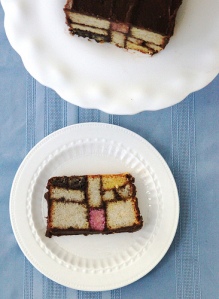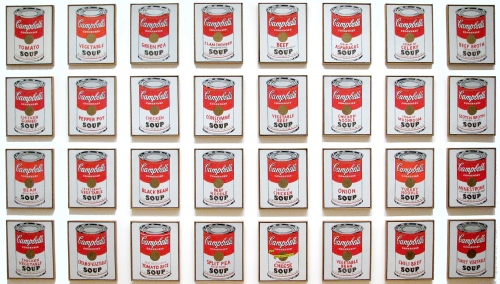
From early Renaissance scenes of the Last Supper to Dali’s Lobster Telephone and Warhol’s Campbell’s Soup cans, food has always been on the canvas, as well as the mind. It’s time for the relationship between the palette and the palate to be brought to the table.
Historically, art can tell us how the cavemen ate, what the Romans drank and why gout was such a fashionable (i.e. unavoidable) disease among the Edwardian elite. Culturally, art reveals just how creative dining has always been – haute cuisine is no new phenomenon.
Through ancient history, people prided themselves on creating dishes as appealing to the eye as to the tastebuds (admittedly often far more). And this was evident in the art of the day – a showcase of the edibles à la mode, left for all to ogle for years to come. Call it still-life, call it whatever you will, the focus was often the realistic depiction of the plate, and historians will always be thankful for precisely that. Before film or photography, painting and sculpture were the ways to visually record life, from a scientific experiment to a lavish feast. So, wanting to be remembered for their epic shindigs, wealthy party hosts became wealthy art patrons.
One thing that comes to mind when the words “food” and “art” flash before me is the idea of movements and fashions. Even in the last few decades, we’ve see the coming in and going out (and sometimes the resurfacing) of trends such as Prawn Cocktail and Pina Colada, Art Deco and Kitsch. The idea of ‘fashionable food’ makes the chef as much of an artiste as the designer or artist, subject to (or responsible for) the whims of the dining/ gallery-going public. Heston Blumenthal, for one, can probably take a lot of credit for the recent return of the Soda Stream, following his marvellous transformation of the cheap ’80s white wine, Blue Nun, through carbonation, into a faux champers.
Last night I had the pleasure of an 8-course taster menu at Pearl, the swanky restaurant headed up by chef extraordinaire Jun Tanaka. I make no hesitation in saying that the dishes were gorgeous to eat, but more notable was how intriguingly complex and genius they were in both visual and taste composition. An amuse bouche of heritage tomato jelly, with a tomato crisp, a light cheese foam and basil sorbet was amusing to both the bouche and the brain to decipher….and that was just the beginning of the savoury exhibition. At the San Francisco Museum of Art Café you can get Mondrian Pound Cake – why get out your paintbrush to imitate the artist when you can get out your wooden spoon instead?
 Heston and Jun, along with Michel Roux, Michel Roux Jnr., Raymond Blanc, Jamie Oliver, Delia Smith, Marco Pierre White…..are who we think of as modern day celebrity chefs, but they comes from a long line of kitchen superstars. Food as aesthetic creation is no new thing.
Heston and Jun, along with Michel Roux, Michel Roux Jnr., Raymond Blanc, Jamie Oliver, Delia Smith, Marco Pierre White…..are who we think of as modern day celebrity chefs, but they comes from a long line of kitchen superstars. Food as aesthetic creation is no new thing.
The only difference is the thousands of TV channels, iPods, 4oDs and iPlayers now constantly putting it into the popular consciousness.
Martino da Como was, in the 15th Century, the first “celebrity chef.” Martino’s elevation to the “Prince of Cooks” made his Liber de Arte Coquinaria one of the bench marks of early European gastronomical literature (a.k.a. cookbooks). Later, in the height of the French Revolution, Marie-Antoine Carême surpassed this “Prince,” becoming known as “The King of Chefs.” Carême was an early pioneer of the elaborate style of cooking known as haute cuisine, the “high art” of French cooking: a grandiose style favoured by both international royalty and the nouveau riche of Paris.
…..Now, for fear of this becoming a history lesson, there is one indefinable, intangible thing that both a painting and a pâtisserie have the power excite in equal measure, with no consideration of fads or fashions: desire. Did you know that Dali’s Lobster Phone has an alternative name? Aphrodisiac Telephone. This says a lot for food-as-subject in general. Think neo-Classicist or pre-Raphaelite…gorgeous women lying around surrounded by platters, men with grapes dangling above their open mouths. In the painting and in the feast, it was all about having the cake. And eating it too.
Moving on a few centuries, desire in food art takes new forms. Andy Warhol’s Soup Cans epitomize precisely what I’m getting at. Desire becomes commodity in the age of consumption, but it is still the same thing, if only in a new, plastic-wrapped new form. Ralph Goings’ painting A-1 Sauce appears just as a few condiments bottles on a table. Not a conventionally romantic image, I’ll grant you, but eye-catching and thought-provoking. Just as modern art must question, prompt and intrigue, so must modern cuisine. And food in art, also, is as prevalent today as it always was, but serves a new purpose – to communicate an opinion, expose a truth or ridicule the ridiculous, rather than showcase the artist’s technical skill.
The imitation of the real in framed, elevated art is like the description in a menu of a dish you can’t quite afford – it just makes you want it more. Along with the human form, the serene landscape and the battle victory, the image of the edible is yet another object of desire. It’s all a question of taste.

Read Full Post »





